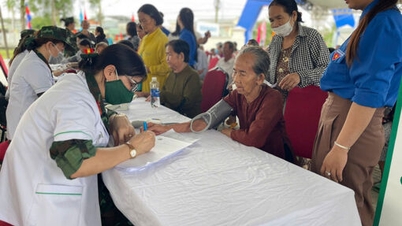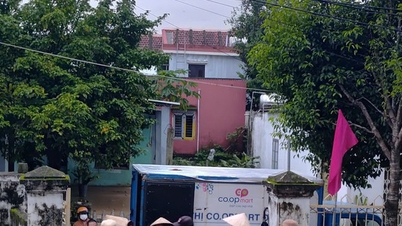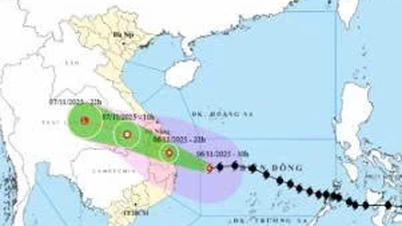Ms. KV (living in Ho Chi Minh City) came to Ho Chi Minh City Dermatology Hospital for examination with a red, swollen, painful wound on her neck.
She said that the wound was just a small red dot at first, so she applied medicine at home. However, the wound did not improve but became more serious and spread.
“I didn’t think the venom of the three-cavity ant could cause such a big wound. My wound is right on my neck, so it’s quite inconvenient to move around. Just turning my neck a little too hard will cause the wound to open up again,” said Ms. KV.
Mr. AT went to the hospital when he discovered a red, swollen spot around his mouth. He thought it was a skin disease and did not think the wound was caused by a red ant.
He said that the trees around his house were dense, so the ants could have flown into the house from outside and mixed in with the blankets. When he went to sleep, he was not careful and was infected with the poisonous virus.

Currently, every day, the Dermatology Hospital of Ho Chi Minh City receives and treats about 60-80 patients with contact dermatitis caused by the three-cavity ant. Among them, many patients come to the hospital late when the wound has spread, become severely ulcerated and begun to show signs of infection.
Doctor CKII Doan Van Loi Em, Head of the Examination Department, Dermatology Hospital of Ho Chi Minh City, said that when the skin comes into contact with the poison of the three-cavity ant, in the first few hours, the patient often feels a burning, stinging sensation, then the skin area exposed to the poison will turn red, swell, have blisters or vesicles, even blister like a mild burn.
The characteristic of contact dermatitis caused by ants is that the lesions are long lines or streaks. Because of this shape, the disease is easily confused with shingles or other forms of contact dermatitis.
“Another common mistake is that when attacked by ants, patients will self-treat with tips and folk remedies such as applying toothpaste, essential oils, ointments of unknown origin or garlic… However, these methods do not help neutralize the toxins, but also cause skin irritation, more burning, and skin ulcers,” Doctor Loi Em warns.
The venom of the red velvet ant is not life-threatening, but improper treatment can cause the damage to spread, worsen inflammation or slow healing, even infection, leaving scars.
Doctors advise that ants are often attracted to light, especially neon and LED lights. During the rainy season, people should limit sitting and working directly under light bulbs, especially near windows or balconies to avoid these insects flying into people.
When working in the fields, especially during harvest season, wear long-sleeved clothes, hats, masks and gloves to reduce the risk of direct contact with ants.
In residential areas, apartments, dormitories, you can prevent ants by installing insect screens on windows and doors and always closing them after use. You should clear bushes, weeds, and clean up organic waste around the house - where ants often live.
At night, turn off unnecessary lights, especially those near windows and hallways; keep the house clean, sweep the floor and sleep with mosquito nets to prevent insects from coming into contact with the skin.
When you see ants crawling on your body, never hit, catch or rub them, because this will break the ant's body, causing the toxins to be released and burn your skin. The safe way to handle this is to use paper or a soft object to gently push the ants away, or blow them away.
If there are signs of burning, blistering, blisters or skin ulcers, the patient should go to a medical facility specializing in Dermatology for examination and proper treatment. Self-treatment at home can make the injury worse, cause infection and leave scars after healing.
Source: https://baolangson.vn/kien-ba-khoang-lai-tan-cong-nguoi-tp-hcm-bac-si-canh-bao-chua-tri-bang-meo-5064092.html






![[Photo] Closing of the 14th Conference of the 13th Party Central Committee](https://vphoto.vietnam.vn/thumb/1200x675/vietnam/resource/IMAGE/2025/11/06/1762404919012_a1-bnd-5975-5183-jpg.webp)



































































































Comment (0)